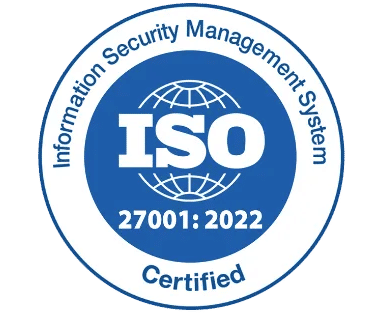How Contract Automation Drives Efficiency & Growth (2025)

What if your business could finalize contracts effortlessly without delays or constant back-and-forth emails? In today’s fast-paced business world, companies need a faster, more reliable way to handle global contracts.
Traditional contract handling is tedious. Legal teams spend too much time fixing mistakes, chasing approvals, and dealing with compliance issues. These delays can cost businesses valuable opportunities.
But what if all your contracts can be managed with greater precision and efficiency. That’s were contract automation assist business and legal teams to enhance their workflow.
In this blog, we will explore how it is revolutionizing the way businesses managing agreements.
What Is Contract Automation
It is the use of software to create, manage, and finalize contracts with less manual effort. It helps businesses manage contracts more efficiently by automating tasks like drafting, reviewing, and storing agreements saving time and reducing errors.
With automation, companies can set up smooth, repeatable contract approval workflow. This means contracts get approved and signed faster, reducing delays and making business operations more efficient. By cutting down time and improving accuracy, it helps businesses close deals quicker, stay legally compliant, and boost overall growth.
Why Should Businesses Automate a Contract
As contracts become more complex, 81% of organizations are turning to automation to simplify their processes, according to WorldCC research. This highlights the growing need for automation in contract management. Here are key reasons why businesses should adopt it.
1) Saves Valuable Time
When it comes to business time and money is crucial factor. With growing technology finalizing contracts manually can be a long and tedious process, often causing unnecessary delays in business operations. The feature significantly reduces this time by streamlining the entire workflow from drafting and approvals to execution and storage.
By automating repetitive tasks, businesses can free up valuable time that would otherwise be spent on manual work. This allows teams to focus on more strategic activities, such as strengthening client relationships, improving negotiations, and driving business growth.
2) Eliminating Contract Delays and Errors
Contracts go through multiple stages before they are finalized evaluation, approval, drafting, and negotiation. At each step, manual work like data entry, tracking approvals, and ensuring compliance creates opportunities for errors, miscommunication, and inconsistencies. These inefficiencies slow down the entire process and increase legal and financial risks.
According to WorldCC, a typical contract encounters up to 40 friction points, with nearly 70% of them occurring during key stages such as evaluation, approval, drafting, and negotiation.
The feature eliminate these friction points by introducing standardized templates, pre-approved clauses, e-signatures, and automated workflows.
3) Cutting Costs and Protecting Contract Value
Clear, well-structured contracts help businesses get the most out of every deal. When contracts are easy to create and manage, teams can work faster, reduce risks, and ensure smooth agreements without unnecessary delays.
It makes this process even better. By streamlining workflows, eliminating manual errors, and using standardized templates, businesses can create accurate, reliable contracts in less time. This not only speeds up approvals but also strengthens partnerships by ensuring transparency and consistency in every agreement.
With automation, legal and business teams can focus on strategic work rather than repetitive tasks, leading to faster deals, stronger relationships, and long-term business growth.
4) Scale Effortlessly as Your Business Grows
As your business expands, the number of contracts you handle increases. Manually managing them all can quickly become overwhelming, leading to delays, missed details, and a heavier workload for your team.
The use of automation in contracts solves this challenge by allowing businesses to create, review, and manage contracts in a streamlined way without adding extra pressure on employees.
With automation, you can handle more contracts efficiently, maintain consistency, and keep up with growth without sacrificing quality or speed.
5) Faster Decision Making
Contracts hold a wealth of valuable information, but manually tracking and analysing them can be time-consuming and inefficient. With automation, businesses gain instant access to key contract data, helping them identify trends, spot inefficiencies, and optimize workflows.
By having a clear overview of contract performance, renewal deadlines, and approval timelines, teams can make informed decisions faster. This not only improves efficiency but also helps businesses reduce risks and seize opportunities at the right time.
What Contract Processes Can Be Automated?
Here are some key processes that automation in contract process simplifies:
- Contract Creation – Create contracts leveraging pre-approved templates and clauses.
- Approval Workflows – Route contracts to the right stakeholders for quick approvals.
- E-signatures – Securely sign contracts digitally without printing or scanning.
- Version Control – Track changes and maintain a single source of truth.
- Compliance Checks – Ensure all contracts meet legal and regulatory requirements.
- Renewal & Expiry Alerts – Get automatic notifications for contract renewals or expirations.
- Data Extraction & Reporting – Analyse contract performance with real-time insights.
- Clause & Policy Updates – Automate updates to reflect changing business or legal needs.
- Storage & Retrieval – Organize contracts in a searchable, centralized repository.
Who Gains the Most from Contract Automation?
Automation is not just for legal teams it benefits multiple departments and industries by making contract management faster, more efficient, and error-free. Here is who gains the most.
1) Legal Teams
Legal professionals play a crucial role in keeping businesses compliant and protected. However, a significant portion of their time is often spent on routine tasks that don’t require legal expertise. In fact, as Gartner research shows that the average legal department lawyer spends 25% – 40% of their time on work that does not need to be done by a lawyer. This means hours are lost on administrative tasks like contract drafting, approvals, and tracking deadlines tasks that could be automated.
By implementing contract automation, legal department can eliminate these repetitive processes and focus on high-value work such as strategic legal advice, compliance oversight, and risk management.
With automated contract management, legal professionals can focus on what truly matters safeguarding the business, securing better agreements.
2) Sales Teams
For sales teams, time is everything. The faster a deal is closed, the sooner revenue comes in. However, traditional contract processes can slow things on legal approvals, manually drafting agreements, and chasing signatures can create frustrating delays.
With contract automation, sales teams can generate contracts instantly using pre-approved templates. This means they do not have to rely on legal teams for every contract, speeding up the process while ensuring accuracy. They can also personalize agreements within approved guidelines and send them for e-signature in just a few clicks.
3) Business Owners
Business managers oversee multiple processes, ensuring everything runs smoothly. However, when contracts require constant follow-ups and coordination between teams, it can slow down operations and cause unnecessary delays.
With automated contract management, leaders gain real-time visibility into contract progress. They no longer need to chase updates or manually track approvals everything is streamlined in one platform.
Automation also enhances collaboration by allowing different teams to work on contracts simultaneously, reducing bottlenecks and improving efficiency.
With clear insights into contract performance, risks, and obligations, they can drive better business outcomes while keeping operations agile and efficient.
4) Procurement Teams
Procurement teams handle multiple vendor contracts, purchase agreements, and supplier negotiations daily. Managing these contracts manually can slow down approvals, create compliance risks, and lead to errors in terms and pricing.
With automation, procurement professionals can streamline contract creation ensure consistency in vendor agreements and reduce unnecessary revisions. Automated workflows help track contract renewals, prevent missed deadlines, and provide clear insights into supplier performance.
Features of Automated Contract Management
Automating contract process provides a range of powerful features that help businesses work smarter and more efficiently. Here are some key benefits of using of it.
1) Contract Generation
Automation simplifies contract creation, making the entire process faster and more efficient. Instead of spending hours drafting contracts from scratch, businesses can use pre-approved templates that automatically populate key details like names, dates, and terms.
This not only ensures consistency but also eliminates the risk of human error.
With automation, legal and sales teams do not have to spend time on repetitive tasks. Contracts can be generated instantly, customized with approved clauses, and sent for approval without delays.
This means deals move forward faster, compliance is maintained, and teams can focus on strategic tasks instead of paperwork.
2) Automated Workflow & Approvals
Once a contract is created, automation ensures it moves through the approval process without delays. The need for manual follow-ups by assigning tasks, setting deadlines, and sending reminders to the right people at the right time.
By streamlining the approval process, businesses can reduce challenges and speed up decision-making. Teams no longer must chase approvals or worry about missed deadlines automation keeps everything on track.
3) Contract Reminders
Keeping track of contract deadlines, renewals, and key milestones can be challenging, especially when managing multiple agreements. Automated contract reminders take the guesswork out of the process by sending timely notifications to the right stakeholders.
Whether it is an upcoming renewal, an expiring agreement, or a critical review date, automation ensures nothing slips through the cracks.
Teams can stay proactive, suppliers and clients remain informed, and contract negotiations happen on time. With automated reminders, businesses can focus on growth while staying in control of their contracts.
4) Pre-Build Templates
Templates play a key role in making managing contract faster and more efficient. A good contract automation provides pre-built templates for different contract types, eliminating the need to start from scratch.
Beyond saving time, automation allows businesses to customize templates with rich text formatting, ensuring contracts align with brand guidelines and legal requirements.
Advanced features like conditional statements and dynamic fields make contracts adaptable, automatically adjusting terms based on specific scenarios.
5) Track Every Change with Version Control
Manually keeping track of contract edits can be a hassle. Audit trail & version control automates this process by recording every change, approval, and update in real time.
This feature ensures that businesses always have access to the latest version of a contract while maintaining a clear history of past edits.
It helps teams stay compliant, reduces errors, and eliminates the risk of working with outdated documents.
With automated tracking, businesses can confidently manage contracts, knowing every detail is securely logged and easily accessible when needed.
Steps To Implement Automated Contract Management in Your Business
Implementing this feature workflow may seem complex, but with the right approach, it becomes a smooth transition. By following the best practices outlined below, businesses can streamline the process and start seeing the benefits faster than expected.
1) Prepare in Advance and Engage Your Team
Getting started with automation requires careful planning to ensure a smooth transition. Rushing into it without a clear strategy can lead to confusion and delays. That is why taking the time to outline your goals and align your team is essential.
Here are a few important questions to think about before you begin:
- What are the top priorities for automation? Are you focusing on reducing manual work, improving compliance, or speeding up approvals?
- Should you start by setting up contract templates, or is importing existing contracts more urgent?
- Which department should adopt the system first? Legal, sales, or procurement?
A well-planned approach helps avoid roadblocks and ensures that automation delivers real value from day one. Make sure all key stakeholders are involved in the decision-making process, so every team gets the tools and workflows they need. Clear communication and collaboration will make the transition smoother and help teams embrace the change with confidence.
2) Train Your Teams
It is used by multiple teams, each with different levels of technical expertise. Some may adapt quickly, while others need more guidance. Ensuring everyone feels confident using the system is crucial for seamless adoption and long-term success.
- Investing in training ensures teams understand how to use automation effectively, reducing errors and increasing efficiency.
- Hands-on learning and interactive sessions help employees apply automation to their daily tasks with confidence.
- A well-trained team maximizes the outcome with the feature, leading to faster processes, better compliance, and improved business outcomes.
When teams are well-trained, automation becomes a powerful asset rather than a challenge.
3) Implement Automation in Phases for a Smooth Transition
Introducing the system in different stages ensures a seamless transition while minimizing disruptions to ongoing operations. Instead of diving in all at once, a phased approach allows businesses to test, refine, and optimize the system for maximum efficiency.
- Begin with a small-scale rollout, such as a specific department or contract type.
- Ensure that it is connected to essential business suites like MS Team, Outlook and SharePoint.
- Gather feedback from teams, refine processes, and expand automation gradually to ensure a smooth and successful adoption.
4) Continuous Optimization for Better Results
No automation process is flawless from the start, but that is the beauty of continuous improvement. As your team begins using the system, you will uncover valuable insights into what’s working and where adjustments can enhance efficiency. Instead of viewing these moments as setbacks, see them as opportunities to refine and optimize your automation strategy.
- Keep refining your approach to make workflows smoother and more efficient.
- Engage with your team regularly to gather feedback and ensure everyone is aligned.
- Track key performance metrics to measure success and identify areas for growth.
- Stay adaptable your automation system should evolve alongside your business needs.
By continuously improving, you ensure that it remains a powerful tool that drives efficiency, reduces risks, and supports long-term success.
5) Gain Support from Key Stakeholders
Successful contract automation starts with getting the right people on board. When key stakeholders understand the value and impact of automation. Their involvement ensures alignment across departments and helps prevent roadblocks down the line.
- Involve legal, sales, procurement, and leadership from the beginning to ensure everyone is aligned and ready for the change.
- Emphasize how automation speeds up approvals, reduces manual tasks, and minimizes risks, making their jobs easier and more efficient.
- Be transparent about changes, answer questions, and provide insights on how automation enhances workflows without disrupting existing processes.
Getting early buy-in from stakeholders paves the way for a seamless implementation, ensuring your automating the contract strategy delivers the best results for your business.
Important Things to Monitor While Automating the Contract Process
Implementing contract automation is a game-changer, but it is not a “set it and forget it” solution. To make the most of your system, you need to continuously monitor key areas that impact efficiency, compliance, and user adoption. A well-optimized automation process ensures contracts move swiftly, data remains accurate, and teams collaborate seamlessly.
1) Adoption Across Teams
Automation works best when everyone is on board. While legal teams may be the primary users, contract workflows also involve sales, procurement, finance, and other departments.
Ensuring that all teams understand the system, use it correctly, and follow best practices is crucial for success. If adoption is slow, dig deeper are teams finding the interface complicated? Do they need more training? Addressing these concerns early prevents long-term inefficiencies.
2) Workflow Efficiency
One of the biggest benefits of automation is speed, but that only happens if workflows are optimized. Contracts should move seamlessly from drafting the contract to approval, negotiation, and execution without unnecessary delays.
Track how long each step takes, identify issues, and adjust. If approvals are taking longer than expected, consider automating reminders or re-evaluating approval hierarchies.
3) Security & Access Control
Contracts contain sensitive business details, so keeping them secure is non-negotiable. Ensure that only authorized team members have access to certain documents.
Are permissions correctly set up? Is sensitive data encrypted? Regular audits help prevent security breaches and ensure compliance with legal standards.
4) Get Team Feedback
Implementing contract automation is just the beginning. As teams interact with the system, new insights will emerge on how to enhance workflows. Pay attention to user feedback what’s intuitive, and what needs improvement? This helps in constant growth.
Identify underutilized features and simplify processes where needed. Small, data-driven adjustments will help you fine-tune automation for maximum efficiency and impact.
5) Future Growth
As your business grows, your contract automation system should keep up. Assess whether the platform can handle an increasing volume of contracts and adapt to new business needs.
If limitations start appearing, it might be time to explore upgrades or additional functionalities.
By consistently monitoring these critical areas, you will ensure your contract automation system remains efficient, secure, and fully optimized for long-term success.
How CLM 365 Streamlines Contract Automation
CLM 365 simplifies and accelerates the entire contract management process through automation. From the initial creation of contracts to approvals, execution, and renewals. By automating these key stages, CLM 365 helps businesses save time, improve accuracy, and enhance collaboration between teams—making the entire contract lifecycle more efficient and streamlined.
Conclusion
Automating the contract management process with a solution like CLM 365 can completely transform how your business handles agreements. By eliminating manual tasks and streamlining workflows, it allows your team to focus on more strategic priorities, boosting efficiency and reducing the risk of human error.
Discover how CLM 365 can help automate your processes, improve efficiency, and ensure compliance. Get started today and transform your workflow!
Frequently Asked Questions
What is an automated contract?
An automated contract is a contract that is created, negotiated, executed, and audited using digital tools and automated processes. This approach streamlines contract management by allowing legal teams and business users to efficiently handle partner relationships, creating a single source of truth for all contract-related activities.
How to automate contract drafting?
- Create standard contracts quickly with automated templates
- Speed up contract execution with automated alerts
- Streamline approval with automated document routing
- Easily track contract performance with automated reports
Is automating contracts secure?
Yes, contract automation tools use encryption, multi-factor authentication, and audit trails to ensure secure and compliant contract handling.
How can automation in contracts process reduce legal risks?
By standardizing contracts, reducing human error, and ensuring compliance with legal requirements, contract automation helps minimize legal risks.
Can contract automation improve the speed of contract execution?
Yes, it accelerates the process by eliminating manual steps, allowing contracts to be drafted, approved, and signed quickly and efficiently.










_svxLrd-8yH.png)

_2VYSFUTN5m.png)

_JiluXJRGNl.svg)

_2djTKNocf.png)





_Rapo0hRMBy.png)










